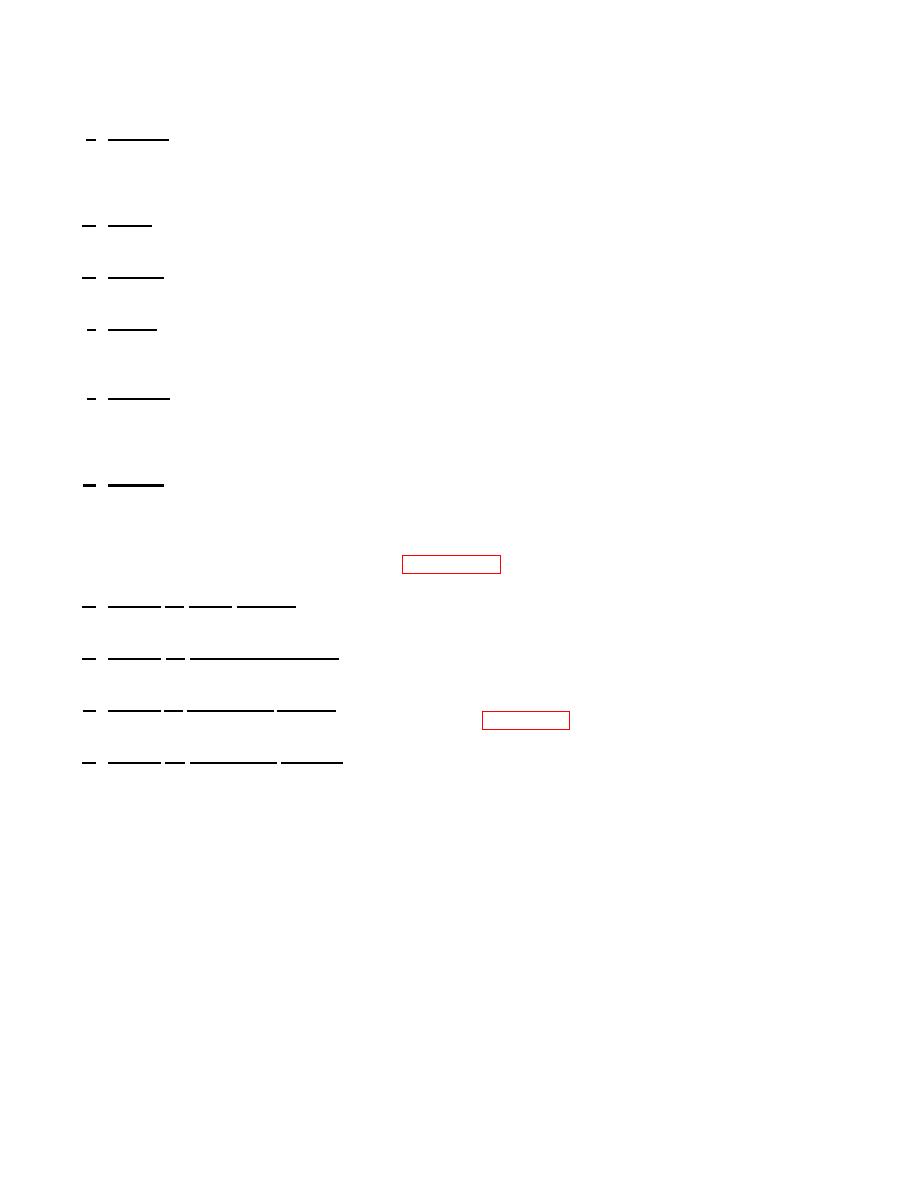
TM9-2330-372-14&P
f. Calibrate. To determine and cause corrections to be made or to be adjusted on instruments or test, measuring,
and diagnostic equipment's used in precision measurement. Consists of comparisons of two instruments, one of which is
a certified standard of known accuracy, to detect and adjust any discrepancy in the accuracy of the instrument being
compared.
g. Install. The act of emplacing, seating, or fixing into position an item, part, or module (component or assembly) in
a manner to allow the proper functioning of an equipment or system.
h. Replace. The act of substituting a serviceable like type part, subassembly, or module (component or assembly)
for an unserviceable counterpart.
i. Repair. The application of maintenance services or other maintenance actions to restore serviceability to an
item by correcting specific damage, fault, malfunction, or failure in a part subassembly, module (component or
assembly), end item, or system.
j. Overhaul.
That maintenance effort (service/action) necessary to restore an item to a completely
serviceable/operational condition as prescribed by maintenance standards in appropriate technical publications (i.e.,
DMWR).
Overhaul is normally the highest degree of maintenance performed by the Army. Overhaul
does
not
normally return an item to like new conditions.
k. Rebuild. Consists of those services/actions necessary for the restoration of unserviceable equipment to a like
new condition in accordance with original manufacturing standards. Rebuild is the highest degree of material
maintenance applied to Army equipment. The rebuild operation includes the act of returning to zero those age
measurements (hours/miles, etc.) considered in classifying Army equipment/components.
B-3. EXPLANATION OF COLUMNS IN THE MAC, SECTION II.
a. Column (1) Group Number. Column 1 lists functional group code numbers, the purpose of which is to identify
components, assemblies, subassemblies, and modules with the next higher assembly.
b. Column (2) Component/Assembly Column 2 contains the names of components, assemblies, subassemblies,
and modules for which maintenance is authorized.
c. Column (3) Maintenance Function.
Column 3 lists the functions to be performed on the item listed in
Column 2.
(For detailed explanation of these functions, see para. B-2).
d. Column (4) Maintenance Category. Column 4 specifies, by the listing of a work time figure in the appropriate
subcolumn(s), the category of maintenance authorized to perform the function listed in Column 3. This figure represents
the active time required to perform that maintenance function at the indicated category of maintenance. If the number or
complexity or the tasks within the listed maintenance function vary at different maintenance categories, appropriate work
time figures will be shown for each category.
B-2

